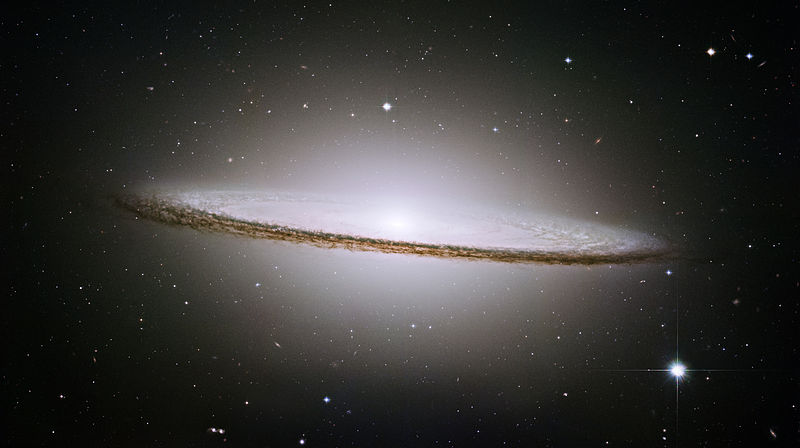Black holes growing faster than expected
February 14, 2013

Sombrero galaxy (credit: NASA/ESA)
Black holes are growing faster than previously thought possible, according to new research published Wednesday in the Astrophysical Journal.
Even the black hole in our own Milky Way Galaxy, which otherwise appears very quiet, has probably been consuming the equivalent of one Sun every 3000 years.
Until recently, astronomers thought that black holes grow mostly when galaxies crash into each other, at which time a large concentration of gas forms around the black hole and gets very hot, shining very brightly in what is known as an active galactic nucleus.
This theory held that black holes in the centers of ordinary spiral galaxies like our own Milky Way cannot grow much.
The study, led by University of Central Lancashire (UCLan) astronomer Dr Victor Debattista, used computer simulations to show that black holes in spiral galaxies must grow by large amounts without the need for collisions.
Closer to home, astronomers have recently discovered a gas cloud near the center of the Milky Way that later this year, we will see ripped apart by the central black hole. Over the next 10 years, the black hole is predicted to be seen having swallowed up to as much as 15 times the mass of the Earth from this cloud.
The team disproved the previous theory — that black holes are unable to grow while the galaxy itself grows — by using computer simulations to compare the masses of black holes in spiral galaxies with those of elliptical galaxies. (Black-hole masses can be accurately predicted from the speed of stars in the galaxies they live in.)
The team’s comparison of spiral and elliptical galaxies found that there is no mismatch between how big their black holes are. For this to have happened, black holes had to have been growing along with the galaxy.
The black hole that has grown the most can be found in the Sombrero galaxy.
The researchers estimate that this black hole has been swallowing the equivalent of one Sun every 20 years and is now over 500 million times as heavy as our Sun.
The new study provides the theoretical basis for understanding the emerging picture that galaxy collisions are a relatively small contribution to the growth of black holes, contrary to previous assumptions.